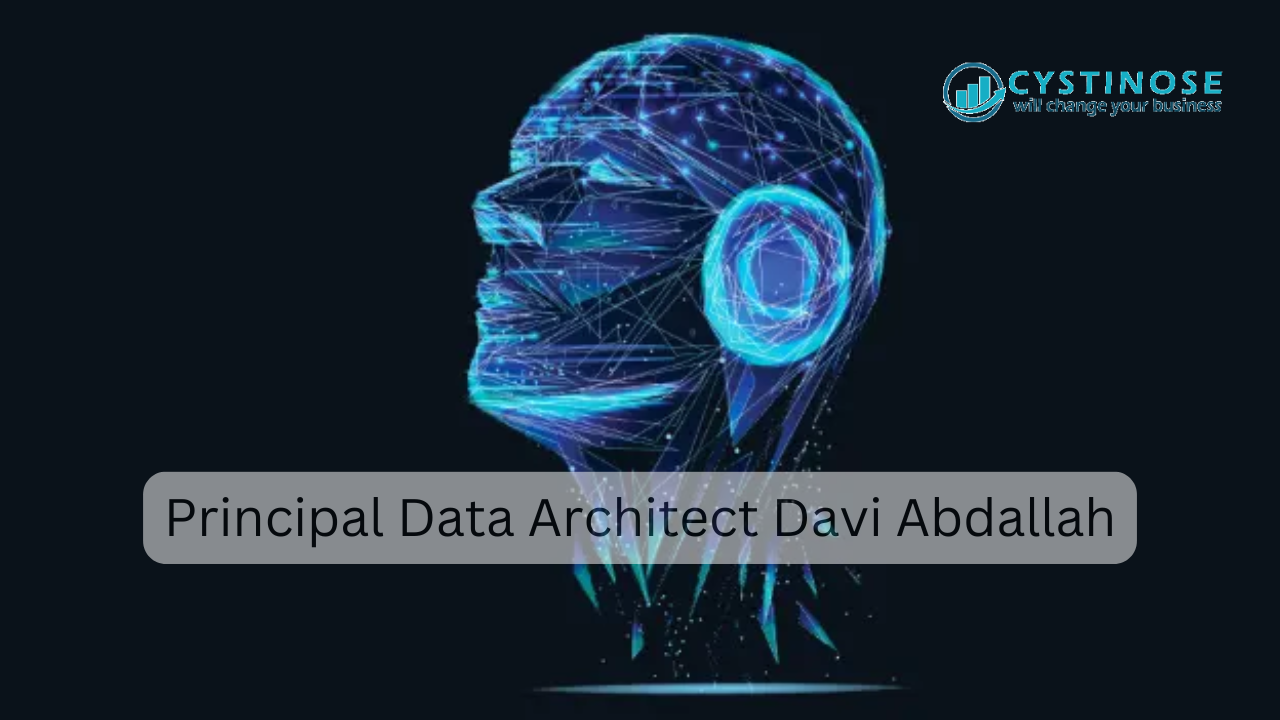In today’s data-driven world, the role of a Principal Data Architect is crucial for organizations aiming to leverage data effectively. One such professional who has made significant contributions in this field is Principal Data Architect Davi Abdallah. With extensive experience and a passion for innovative data solutions, Abdallah has become a leading figure in data architecture.
Who is Principal Data Architect Davi Abdallah?
Principal Data Architect Davi Abdallah is a seasoned expert in designing and implementing sophisticated data systems. Throughout his career, he has been at the forefront of technology, helping large organizations build and scale their data architectures to improve business intelligence, data accessibility, and system efficiency. Abdallah has worked with top companies across various industries, earning a reputation for being a visionary and pragmatic data architect.
The Role of a Principal Data Architect
Before delving into Abdallah’s contributions, it’s important to understand the role of a Principal Data Architect. This high-level position requires a blend of technical skills, leadership abilities, and strategic vision. The key responsibilities of a Principal Data Architect include:
Designing Data Systems
A Principal Data Architect is responsible for designing systems that manage, store, and process vast amounts of data. This involves selecting appropriate architectures (e.g., cloud, on-premise, hybrid) and ensuring scalability and flexibility.
Data Governance and Security
Ensuring that data is accurate, accessible, and secure is a fundamental part of the role. Architects set up frameworks to ensure compliance with industry regulations, maintain data integrity, and minimize security risks.
Collaboration Across Teams
Data architects work closely with other stakeholders, including data engineers, data scientists, and business leaders. They ensure that data systems align with business objectives and technical requirements.
Optimizing Data Infrastructure
Constant evaluation and optimization of data infrastructures are critical. Principal Data Architects ensure that data pipelines, storage solutions, and analytics platforms are efficient, reliable, and future-proof.
Davi Abdallah’s Approach to Data Architecture
Principal Data Architect Davi Abdallah has been instrumental in guiding organizations through the challenges of modern data architecture. He focuses on balancing innovation with practicality, ensuring that his solutions are both cutting-edge and aligned with business goals. Abdallah is known for his ability to translate complex data concepts into tangible business value.
Emphasis on Scalable Solutions
One of the core principles that Abdallah advocates for is scalability. As data needs grow, it’s vital to design systems that can expand seamlessly without sacrificing performance or requiring costly overhauls. Abdallah emphasizes the importance of cloud technologies and hybrid cloud infrastructures, ensuring that organizations can scale their data operations without limitations.
Prioritizing Data Security
Given the increasing concerns surrounding data breaches and cyber threats, Davi Abdallah places a strong emphasis on data security. For Abdallah, building robust security protocols is an integral part of data architecture. He ensures that data is encrypted at rest and in transit, employs strong access control mechanisms, and regularly audits systems for vulnerabilities.
Advocating for Data Governance
Abdallah understands that effective data governance is crucial to ensuring that data remains valuable and trustworthy. In his approach, he emphasizes data quality, transparency, and accountability. He advocates for the implementation of frameworks like data lineage, data stewardship, and metadata management to maintain control over data assets throughout their lifecycle.
Leveraging Modern Tools and Technologies
To stay ahead of the curve, Davi Abdallah embraces the latest advancements in data architecture, including AI-driven data management tools, automation, and advanced analytics platforms. His forward-thinking approach ensures that organizations can leverage cutting-edge technologies to extract more value from their data, increase operational efficiency, and make better-informed decisions.
Building Strong Cross-Functional Collaboration
One of Abdallah’s strengths lies in his ability to work across diverse teams and align technical solutions with business strategies. He facilitates communication between data teams, IT departments, and business leaders, ensuring that all stakeholders have a clear understanding of data initiatives. This collaboration ensures that data architecture isn’t built in isolation but is a central part of the company’s overall vision.
Practical Steps for Building a Robust Data Architecture
Whether you’re an organization looking to build a new data architecture or enhance an existing one, here are some practical steps, inspired by Davi Abdallah’s approach, to guide you through the process.
Step 1: Assess Your Business Needs and Data Objectives
Before diving into any data architecture design, it’s important to assess your organization’s unique needs. This includes understanding what business problems you want to solve using data, the types of data you will manage, and how you intend to use it. Collaborating with key business stakeholders will help you align your data architecture with business goals.
Step 2: Choose the Right Architecture for Your Needs
Select the appropriate data architecture that aligns with your scalability, security, and performance requirements. As Davi Abdallah emphasizes, modern data architectures often leverage a hybrid approach, combining on-premises and cloud solutions. Consider factors such as storage needs, data processing volumes, and latency requirements when making your decision.
Step 3: Focus on Data Governance and Security
Establish strong data governance frameworks from the start. Implement data management practices that ensure data quality, privacy, and compliance. Work with legal and compliance teams to ensure adherence to industry regulations. For example, GDPR compliance is crucial for any organization dealing with personal data.
Step 4: Implement Data Pipelines and Integration Layers
Set up data pipelines to move, transform, and process your data efficiently. Data pipelines should integrate multiple data sources, ensuring that data flows seamlessly between systems. Tools like Apache Kafka, Apache Airflow, or cloud-native solutions such as AWS Glue can help automate data movements.
Step 5: Invest in Automation and Monitoring
Automate as much as possible to reduce manual interventions and errors. Use monitoring tools to track the performance of your data systems and ensure optimal operation. Tools like Apache Spark for processing, combined with monitoring platforms like Prometheus or Datadog, can be invaluable for real-time data oversight.
Step 6: Foster Cross-Functional Collaboration
A key takeaway from Davi Abdallah’s career is the importance of collaboration between technical teams and business stakeholders. Regular communication and feedback loops ensure that data solutions are aligned with business needs. Additionally, fostering a culture of data-driven decision-making will increase the impact of your architecture.
Step 7: Continually Evolve Your Data Strategy
Data architectures are never static. Technology evolves rapidly, and so do business needs. Regularly evaluate and iterate on your data architecture to ensure it continues to meet both technical and business requirements. Staying informed about the latest data management technologies will help you stay competitive.
Conclusion
Principal Data Architect Davi Abdallah’s approach to data architecture offers invaluable insights for organizations looking to improve their data management systems. His focus on scalability, security, governance, and collaboration provides a roadmap for success in this ever-changing landscape. By following his principles and practical steps, businesses can not only enhance their data architecture but also gain a competitive advantage through more efficient and effective data management.







